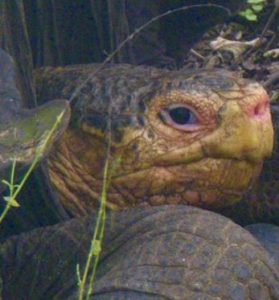 Returning extinct animals to the wild is a conservationist’s dream. Flinders scientist Professor Luciano Beheregaray is part of an international campaign to reintroduce extinct species of the mighty giant tortoise to the Galápagos Islands.
Returning extinct animals to the wild is a conservationist’s dream. Flinders scientist Professor Luciano Beheregaray is part of an international campaign to reintroduce extinct species of the mighty giant tortoise to the Galápagos Islands.
Bringing back the Floreana and Pinta island species from extinction is now a possibility, according to Professor Beheregaray from Flinders University’s School of Biological Sciences.
“We anticipate arduous but rewarding times ahead for giant tortoise conservation biologists,” he writes with co-author Dr Adalgisa (Gisella) Caccone in The Conversation about the Yale University research program on the Galápagos Islands located 1000km off the coast of South America.
The world’s largest land-living cold-blooded animals inspired Charles Darwin’s theory of evolution after the Galápagos Islands were colonised in the late 1800s.
A combination of poaching by whalers and pirates, and introduced pests competing for food and eating eggs and hatchlings, led to tortoises being exterminated on some islands, and dramatically reduced on others, they say.
Four of the 15 species became extinct until the genetic research program made a very surprising discovery 10 years ago.
“Some tortoises on Volcano Wolf, on Isabela Island, didn’t match others normally found on the volcano. Instead, their DNA matched that of the extinct species from Floreana and Pinta,” they write.
“Old logbooks from the whaling industry indicate that, in order to lighten the burden of their ships, whalers and pirates dropped large numbers of tortoises in Banks Bay, near Volcano Wolf.
“Many of these tortoises made it to shore and eventually mated with the native Volcano Wolf species, producing hybrids that still maintain the distinctive saddleback shell found in the species from Floreana and Pinta.
“These hybrids include animals whose parents represent purebred individuals of the two extinct species.”
An extensive expedition recently discovered more than 1300 tortoises, including nearly 200 that potentially have mixed ancestry from Floreana or Pinta.
“We airlifted 32 of them to the ship and then to the captive breeding facility of the Galápagos National Park on the island of Santa Cruz.
“The DNA of these tortoises will be analysed to inform the best breeding strategy. We want to restore as much as possible the genes originally found on Floreana and Pinta.
“The captive-born offspring of the two extinct species are expected to be released in their native islands within the next five to ten years.”
Professor Luciano Beheregaray is an ARC Future Fellow and Head of Molecular Ecology Group at the School of Biological Sciences at Flinders University.

